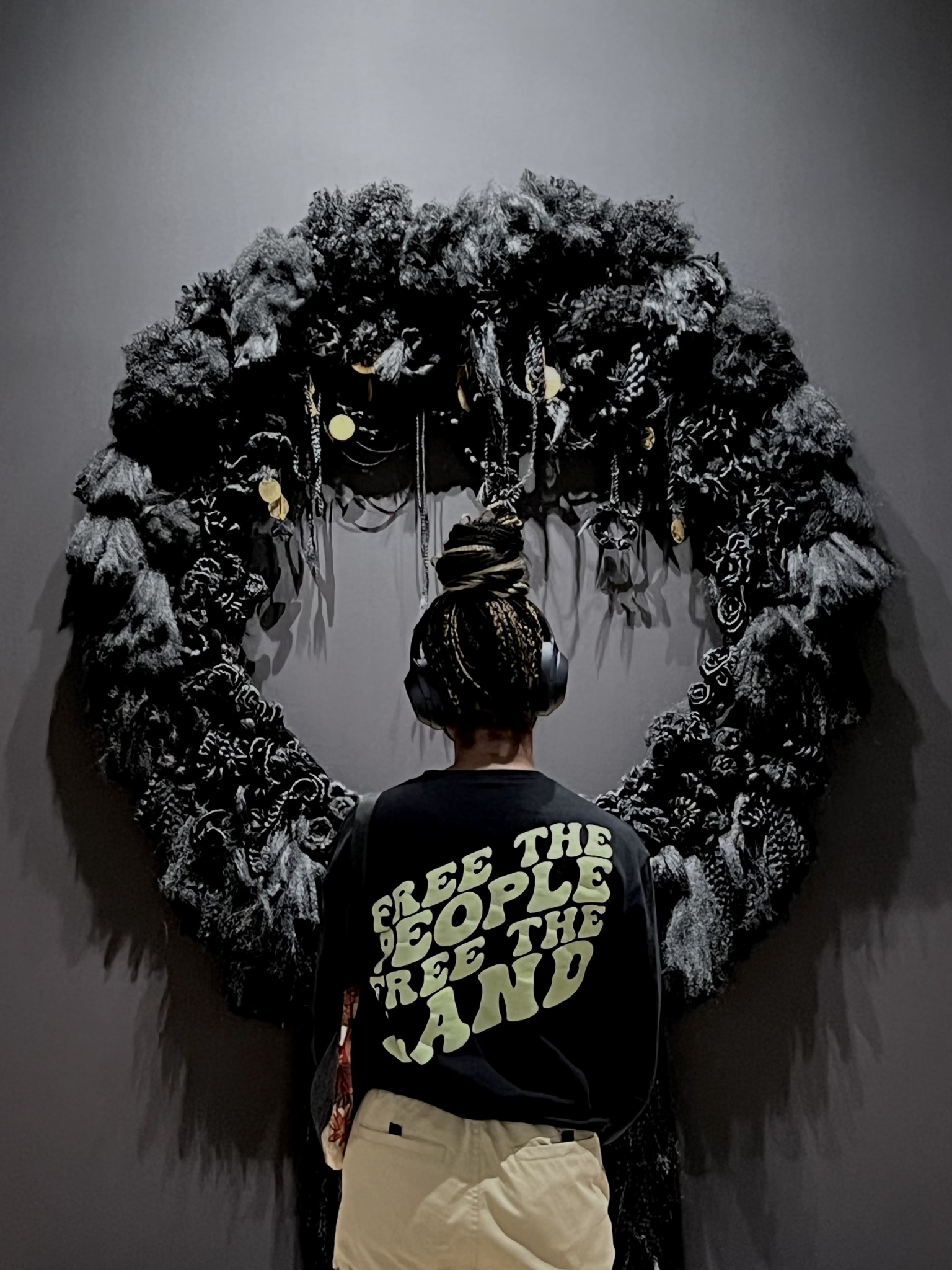Museums are my favorite third place. A few times a week I find myself at the Oakland Museum of California, walking-distance from home, practicing the ritual of getting lost among the natural, art, and California histories.
One Sunday in January, however, I happened upon a series of fortunate events that deviated from my usual milieu. It started at home on the museum’s event page—Register here for an online study group hosted by The Church of Black Feminist Thought.
Ten minutes later I joined Zoom and entered a collective dreamspace. Together, we conspired in practices of liberation, including an exercise where everyone chorused “practice another way to breathe” (Alexis Pauline Gumbs, Undrowned). Some on the call sang, others buzzed. I whispered. At the end of this virtual communion, when I craved further inspiration and physical connection, I knew which well to return to.
Twenty-minutes later I was at the museum standing in front of my favorite piece—Mourning Wreath by local artist Angela Hennessy. The nearly-three-meter ring hung alone on a wall painted black. Its tangled weave of synthetic and Angela’s hair, chains, gold leaf, and paint knotted an ecosystem of tradition, power, Blackness, and grief.
I scanned the accompanying QR code to listen to Angela’s “Mourning Meditation”. Her voice felt so personal and intimate through my headphones: “Grieve on the daily. Make time every day to grieve…breathing in and breathing out, breathing in and breathing out…” As her words swelled, I matched her grief with my own. I practiced another way to breathe.
Moments like that Sunday—sparked by random curiosity, rooted in community, and experienced at museums—are what drive me in exploring art’s relationship to truth, history, and the natural world. Conceptual installation artist Mark Dion calls it the ability “to blend things more critically”. (He references the Oakland Museum, of all places).

Photo captured by Angela Hennessy. Same Sunday
